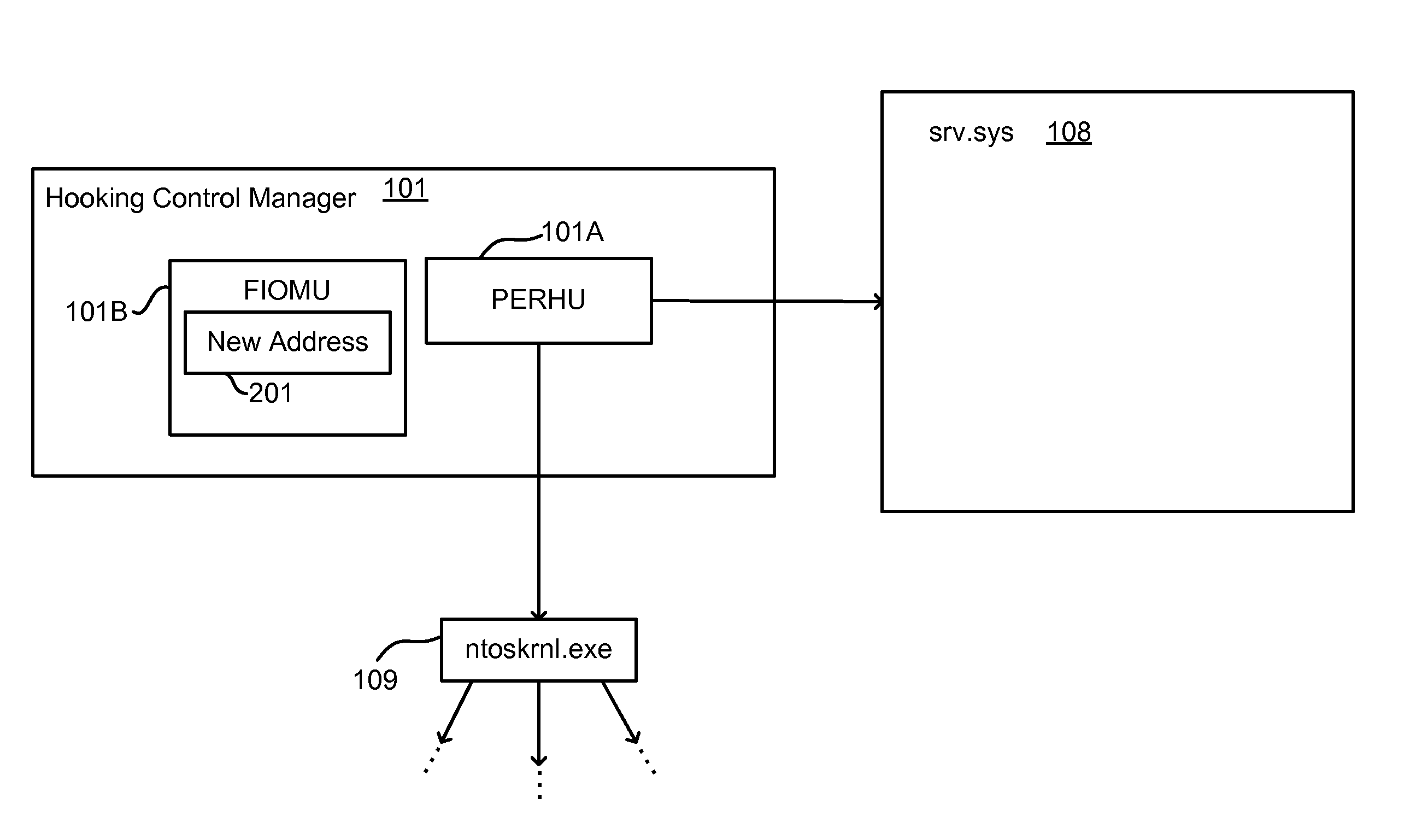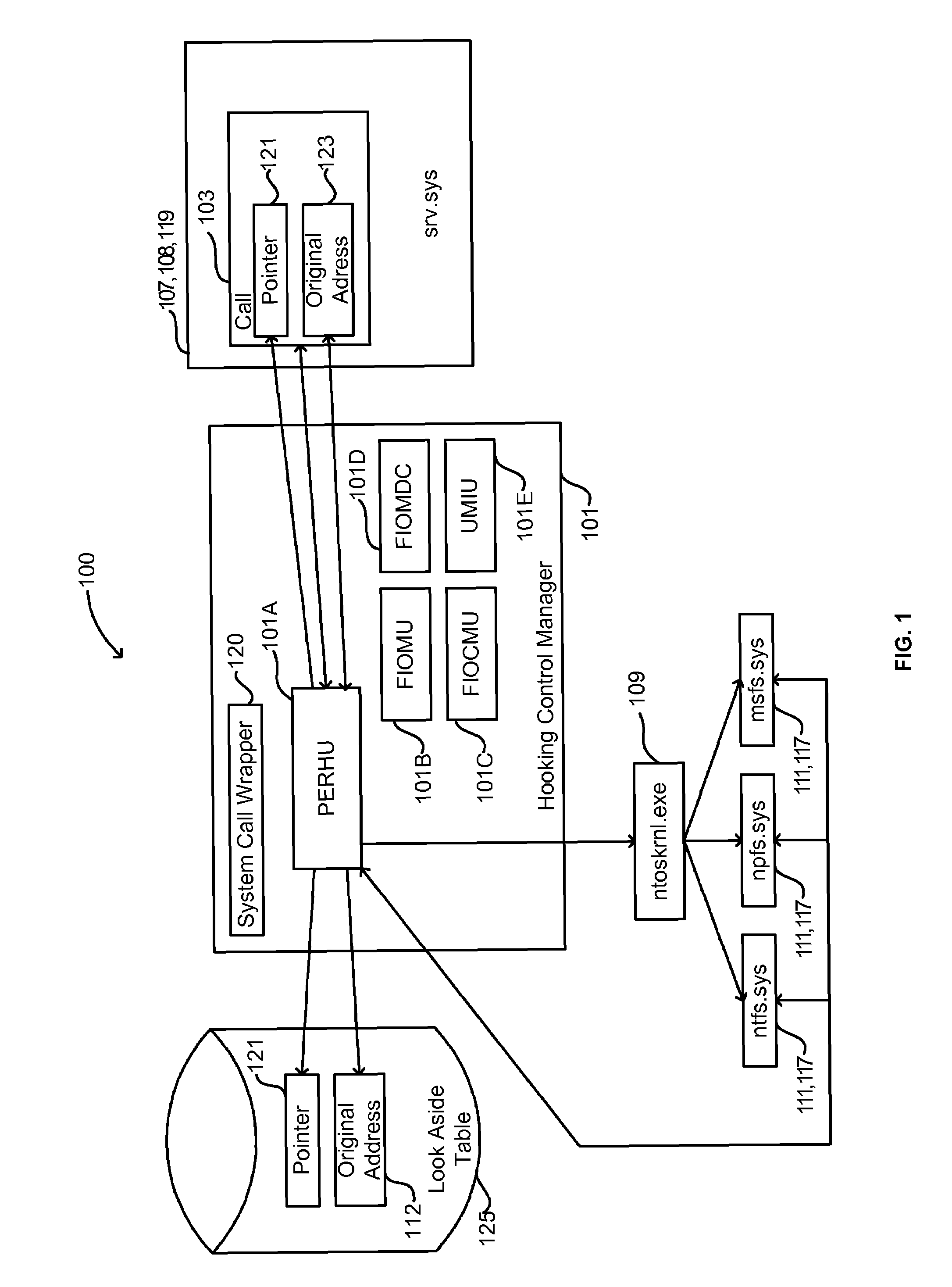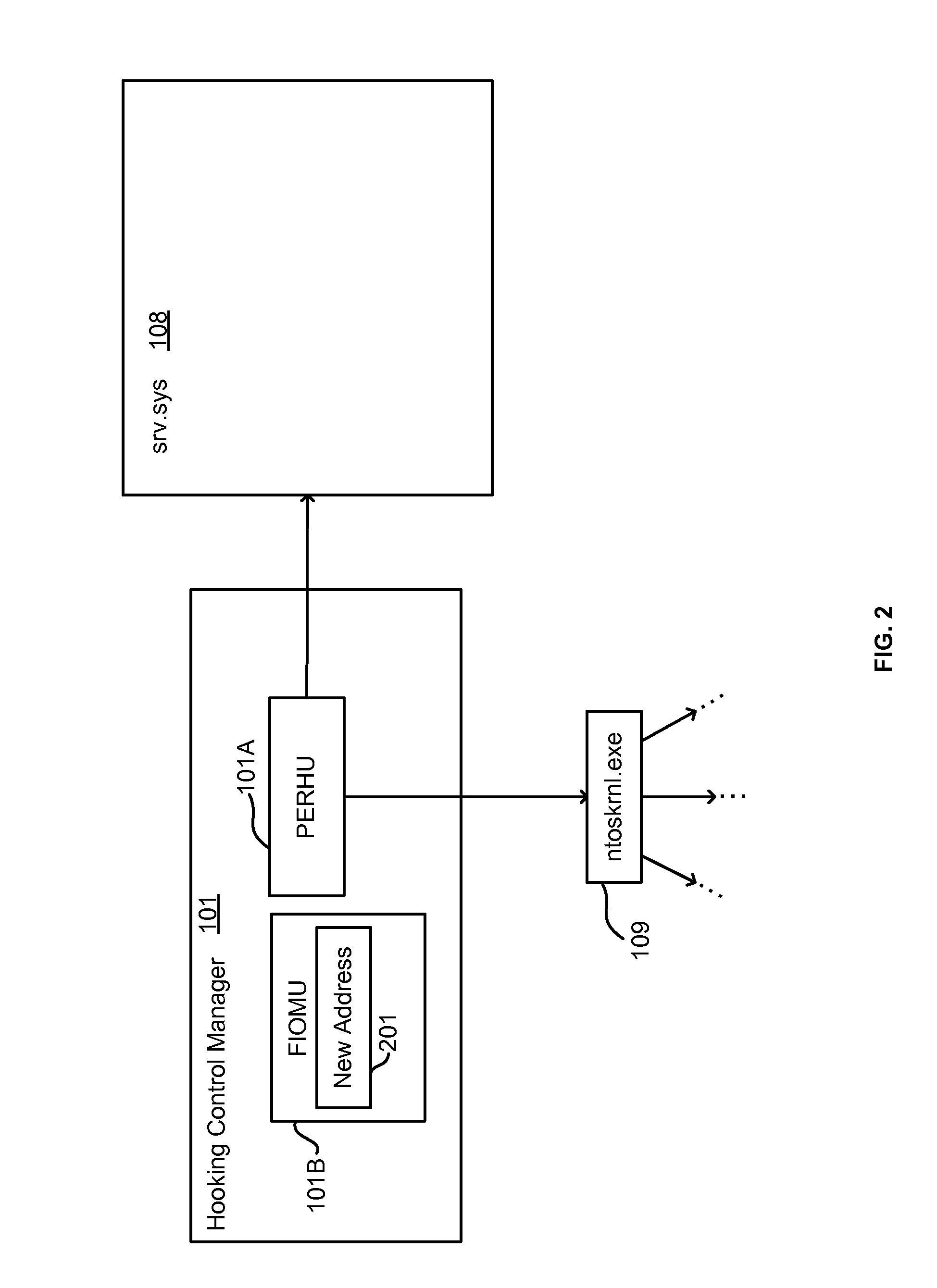Lightweight hooking mechanism for kernel level operations
a kernel and operation technology, applied in the field of hooking kernel level operations, can solve problems such as performance degradation, inability to use system standard buffer caches, and required continuous and intensive reverse engineering efforts to explore the internals of protocols
- Summary
- Abstract
- Description
- Claims
- Application Information
AI Technical Summary
Benefits of technology
Problems solved by technology
Method used
Image
Examples
Embodiment Construction
[0018]FIG. 1 illustrates a high level overview of a system 100 for performing some embodiments of the present invention. A hooking control manager 101 hooks outgoing calls 103 from an operating system module which serves remote file input-output requests 107. It is to be understood that although the hooking control manager 101 is illustrated as a single entity, as the term is used herein a hooking control manager 101 refers to a collection of functionalities which can be implemented as software, hardware, firmware or any combination of the three. Where a hooking control manager 101 is implemented as software, it can be implemented as a standalone program, but can also be implemented in other ways, for example as part of a larger program, as a plurality of separate programs, or as one or more statically or dynamically linked libraries.
[0019]In a current Microsoft Windows NT® configuration (including versions of Windows based on NT, such as XP, 2000 and 2003), the operating system mod...
PUM
 Login to View More
Login to View More Abstract
Description
Claims
Application Information
 Login to View More
Login to View More - R&D
- Intellectual Property
- Life Sciences
- Materials
- Tech Scout
- Unparalleled Data Quality
- Higher Quality Content
- 60% Fewer Hallucinations
Browse by: Latest US Patents, China's latest patents, Technical Efficacy Thesaurus, Application Domain, Technology Topic, Popular Technical Reports.
© 2025 PatSnap. All rights reserved.Legal|Privacy policy|Modern Slavery Act Transparency Statement|Sitemap|About US| Contact US: help@patsnap.com



